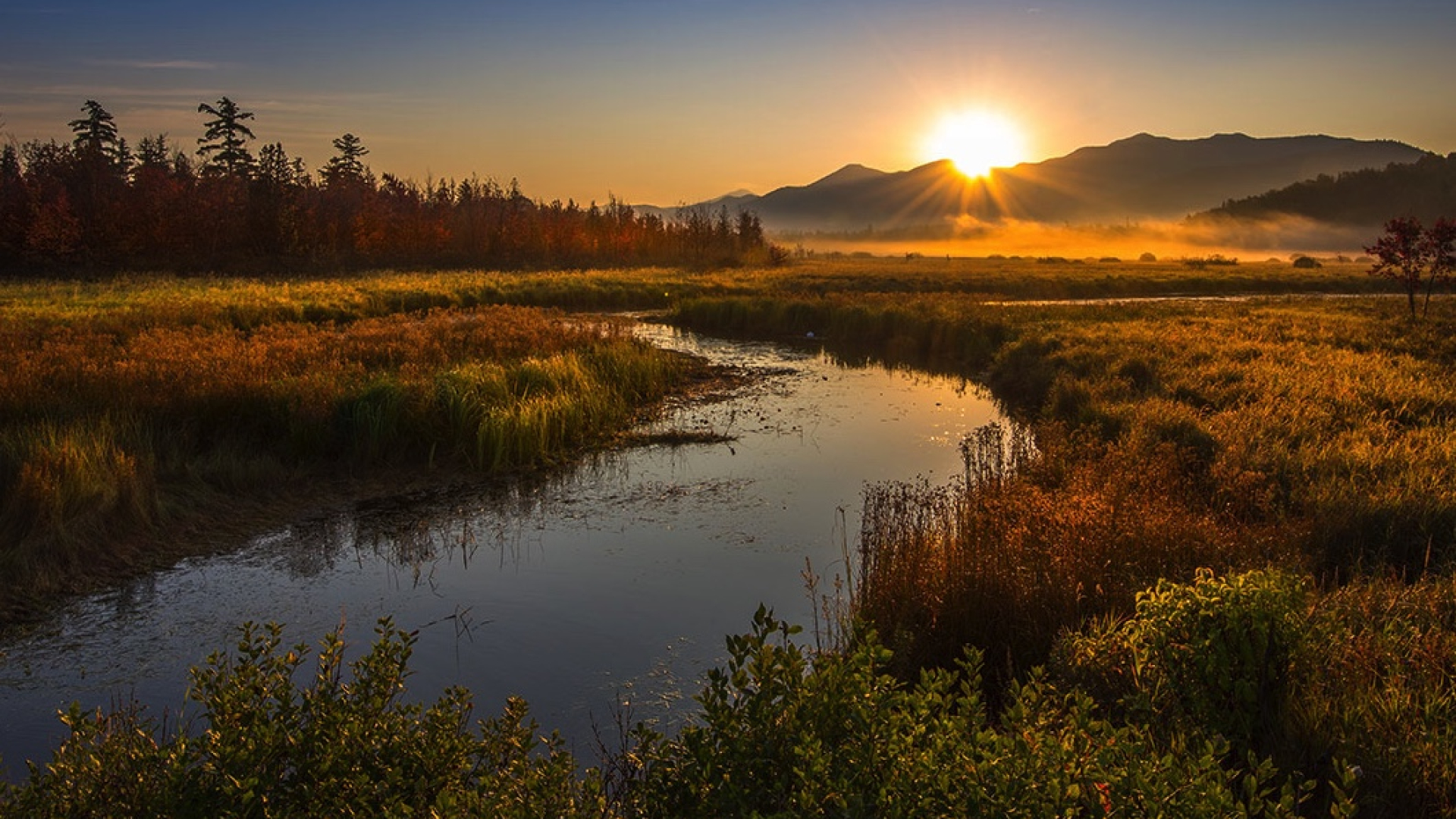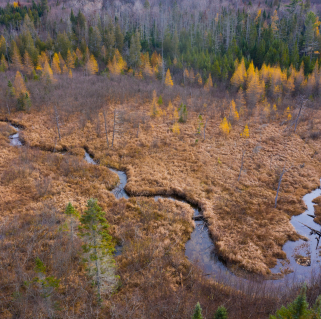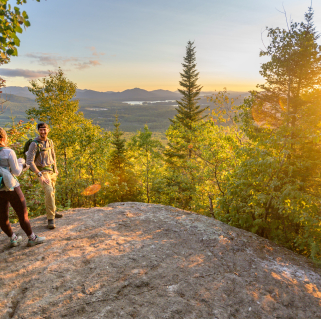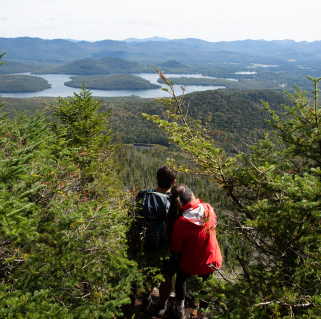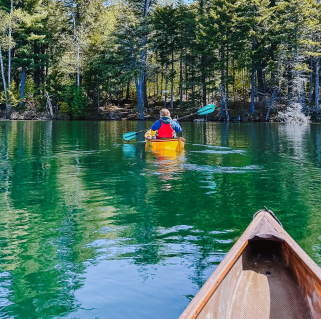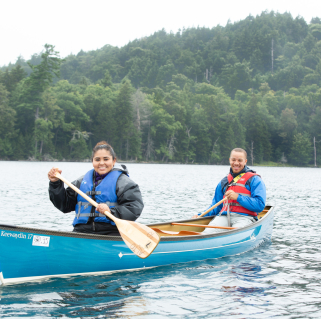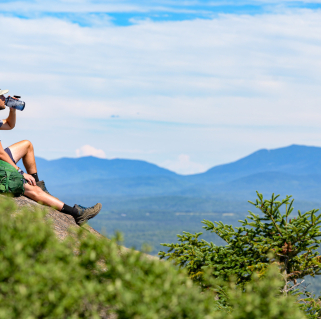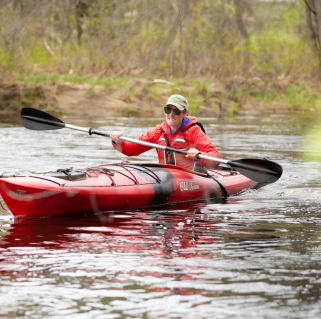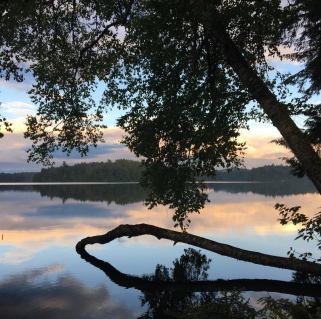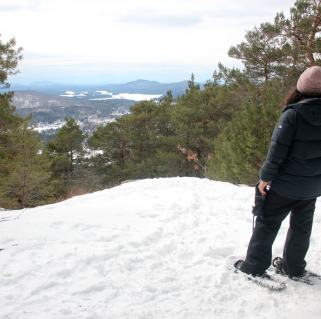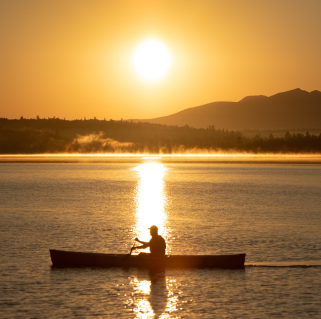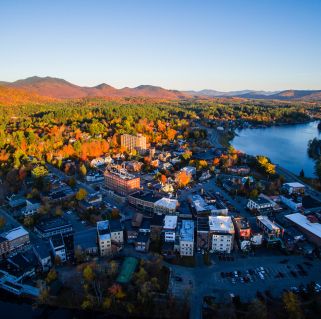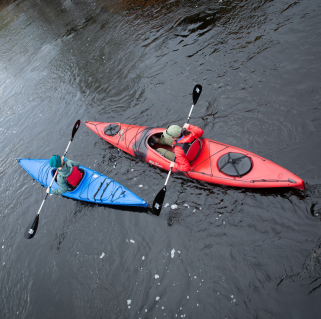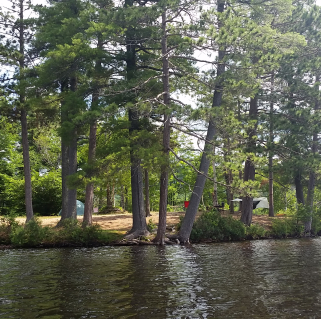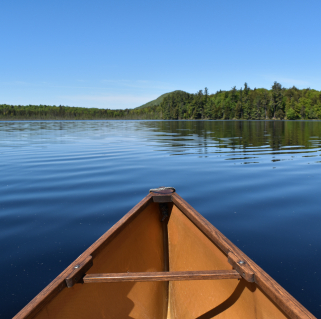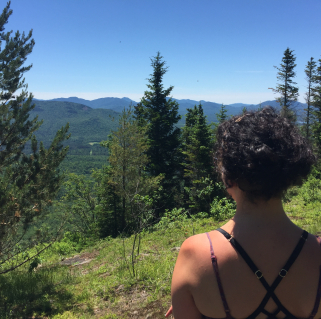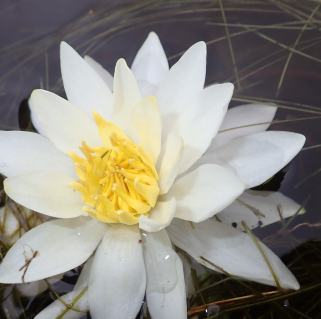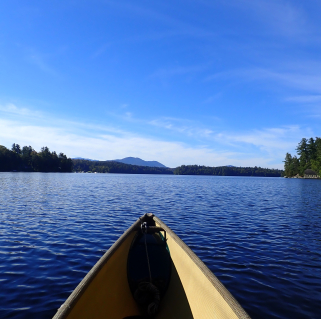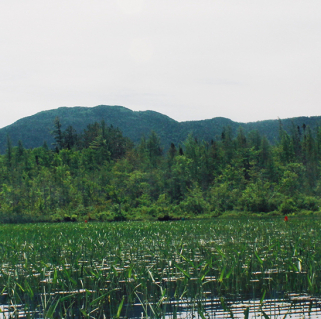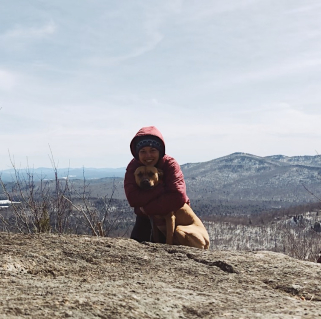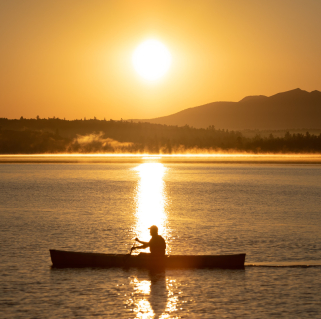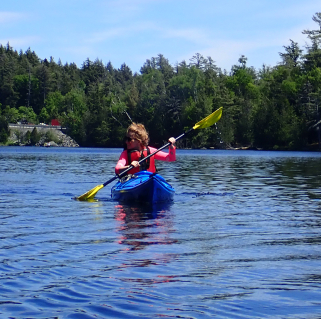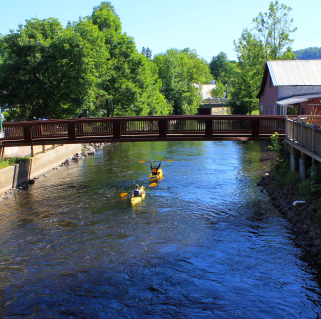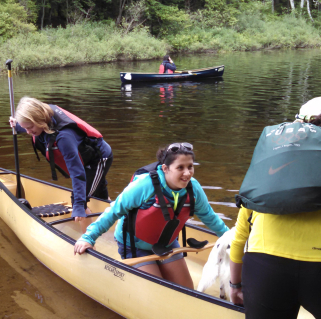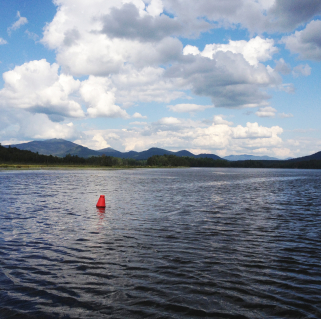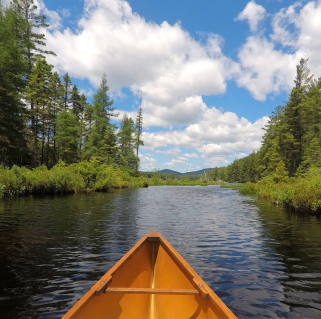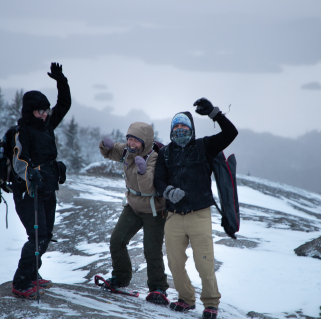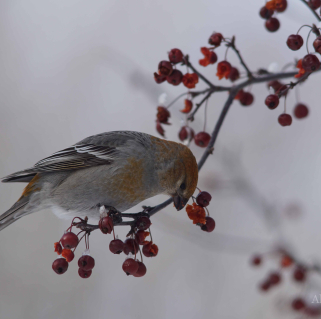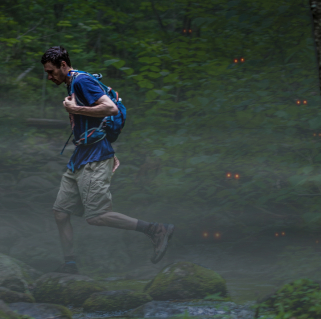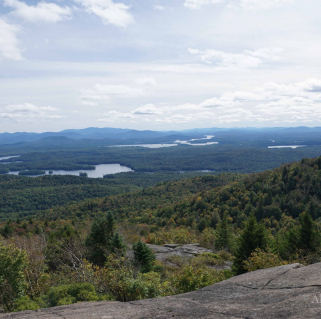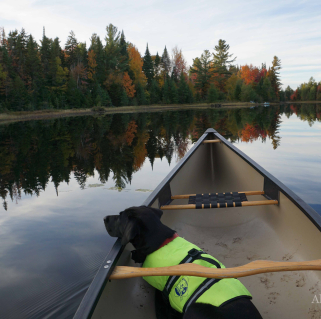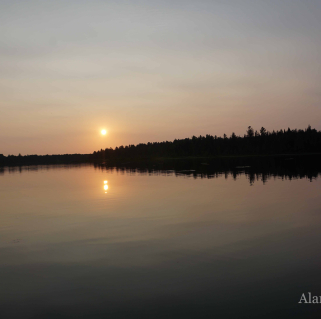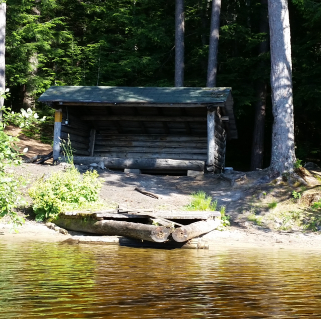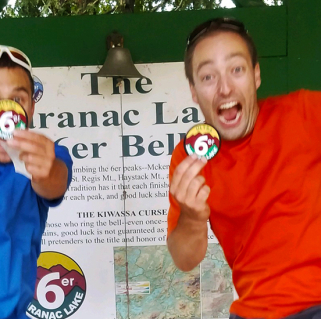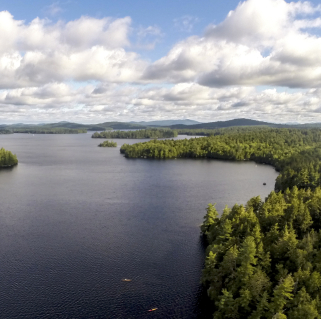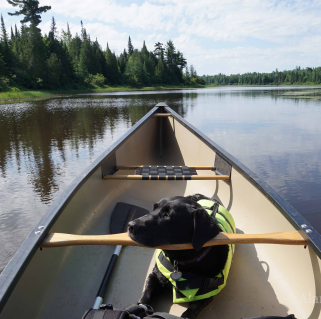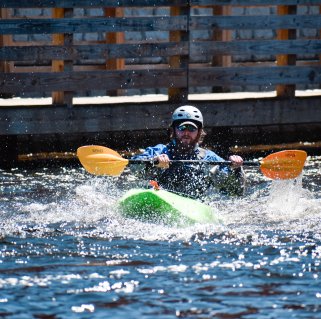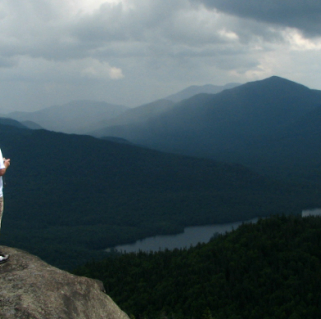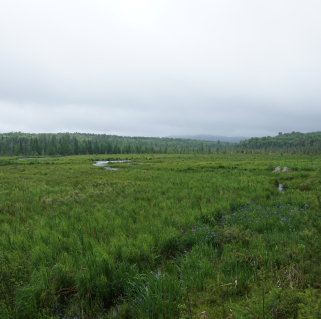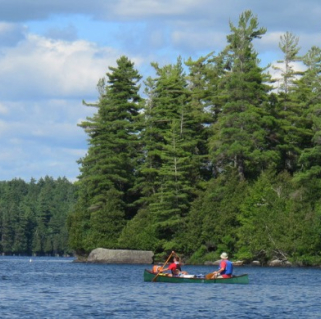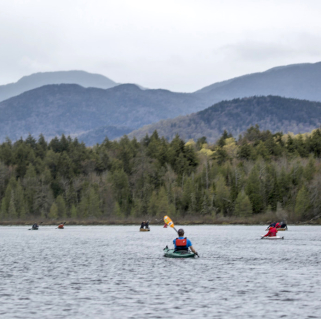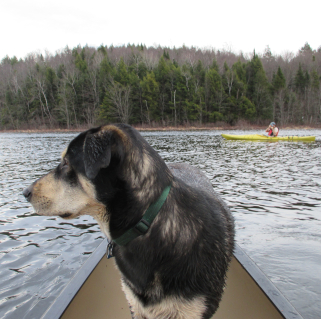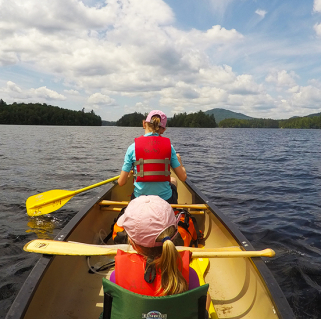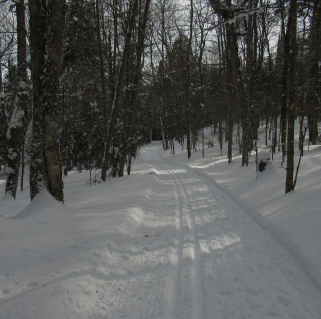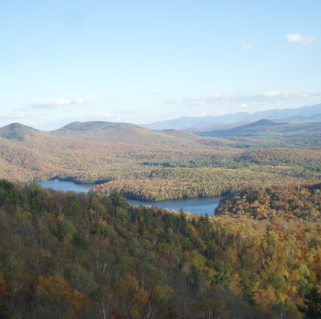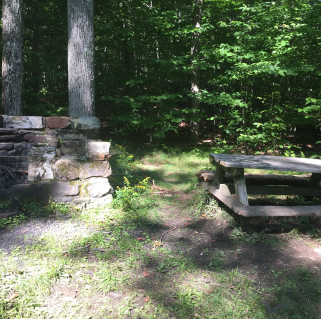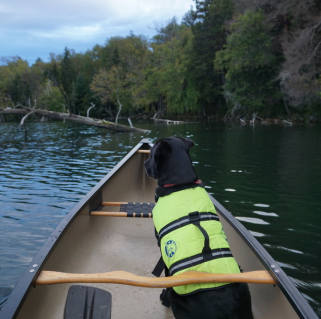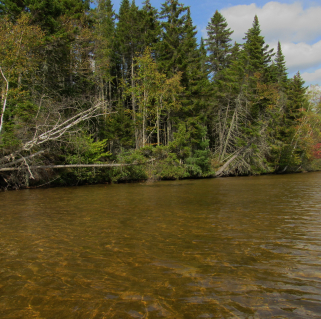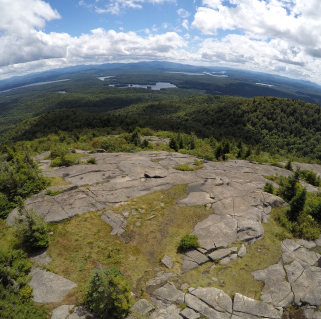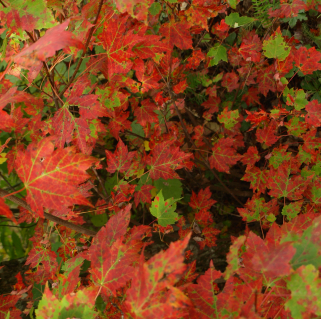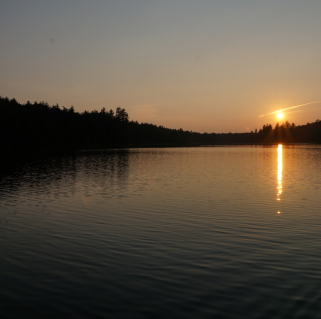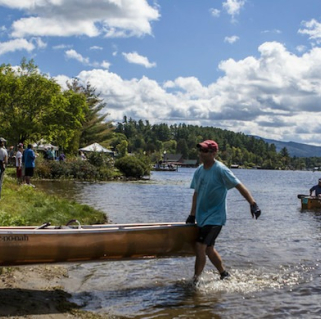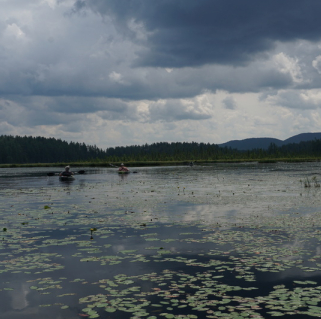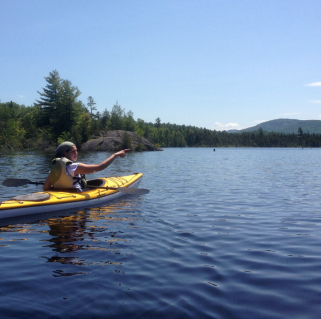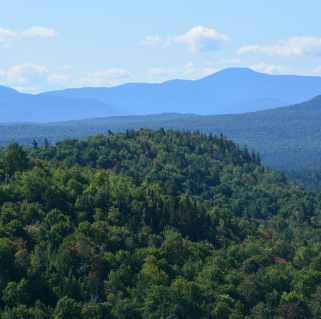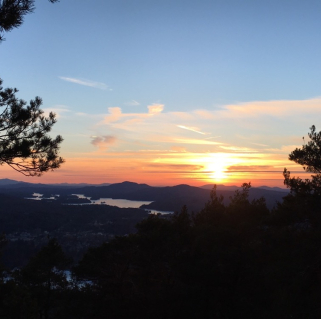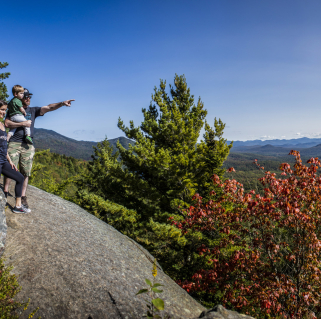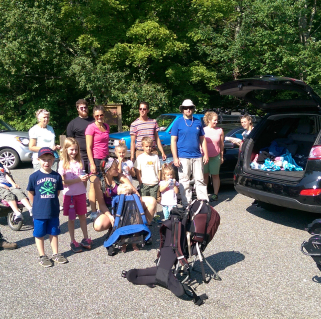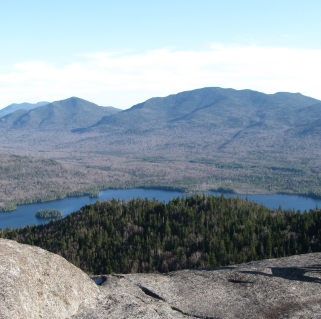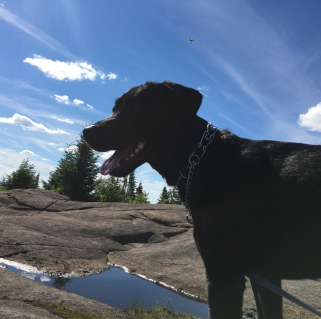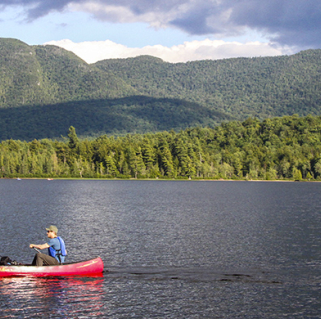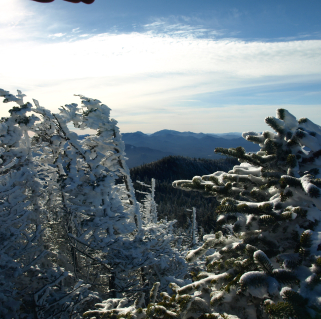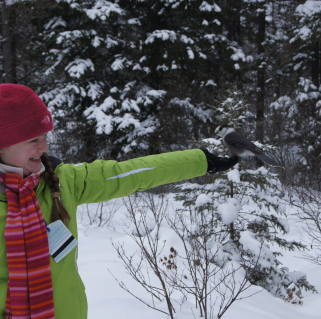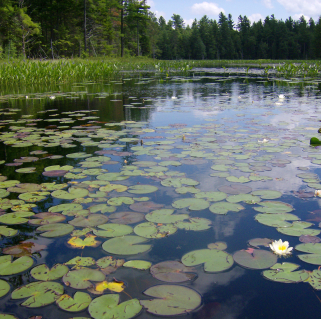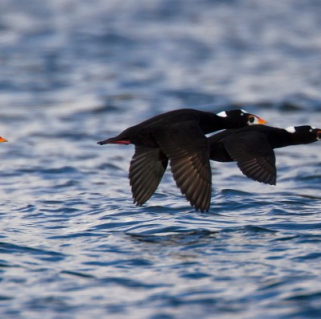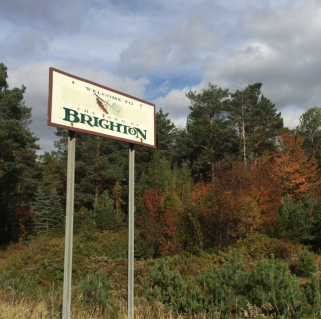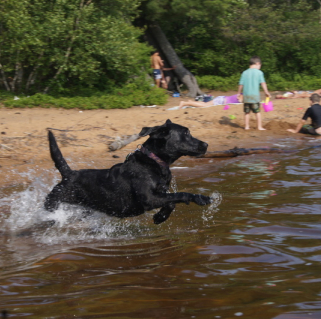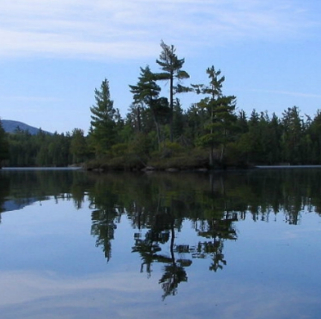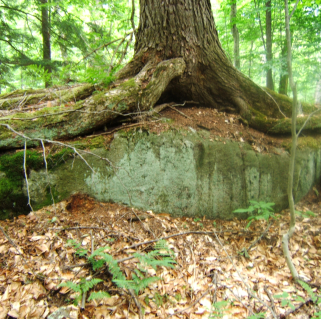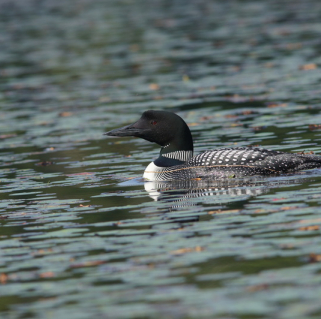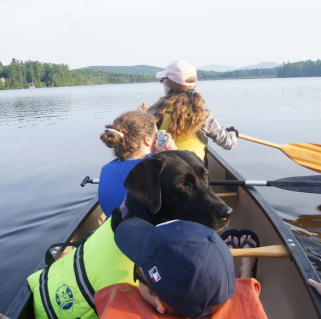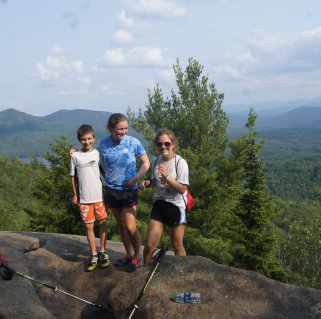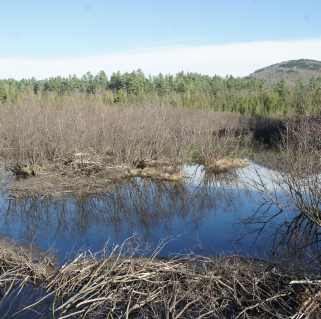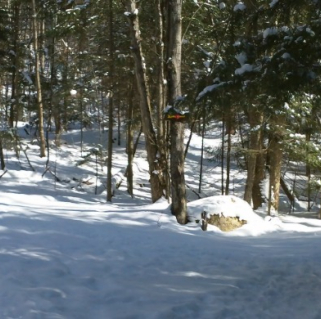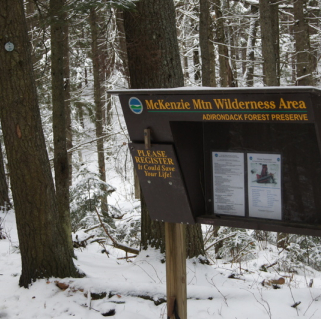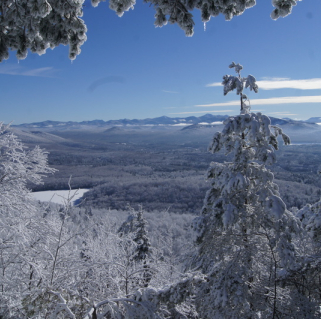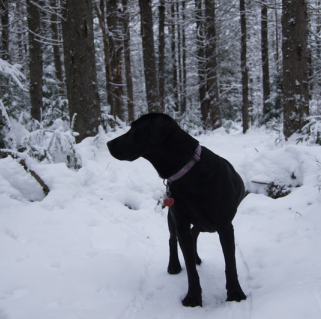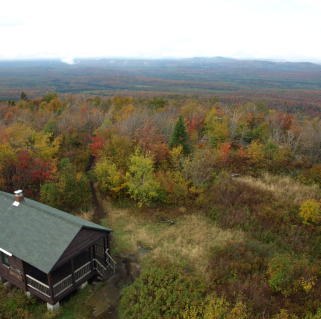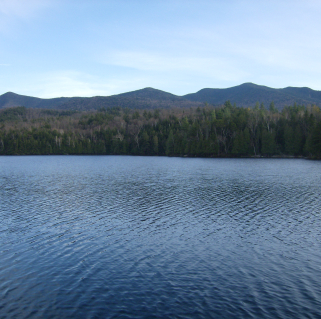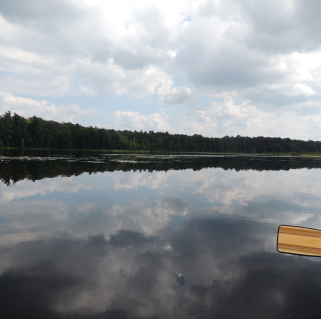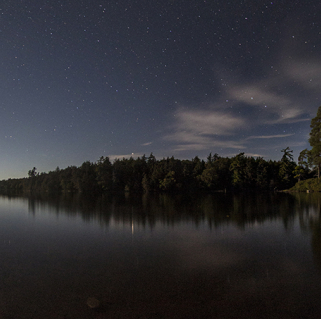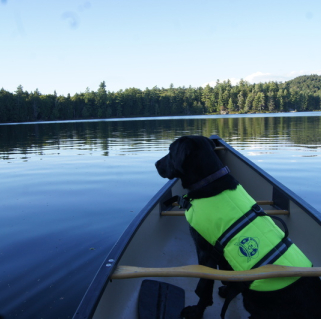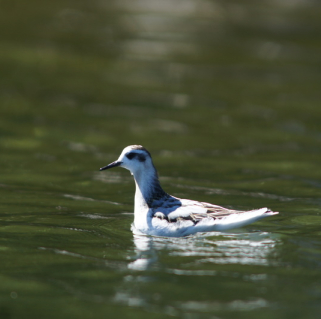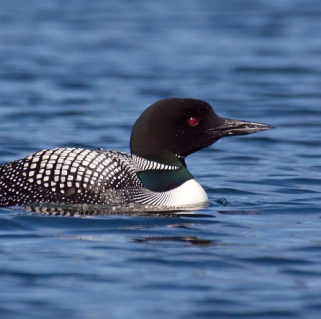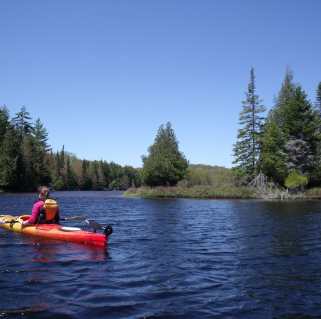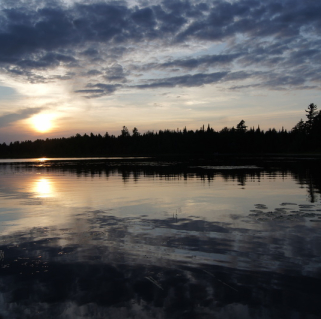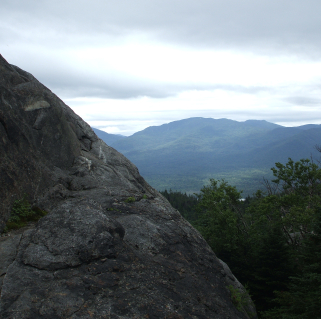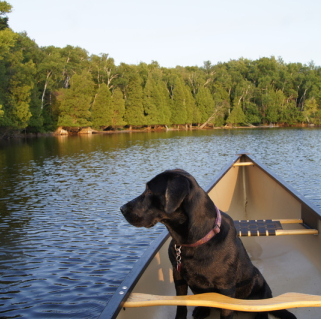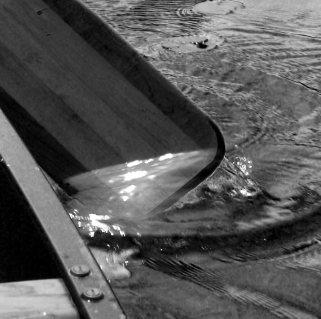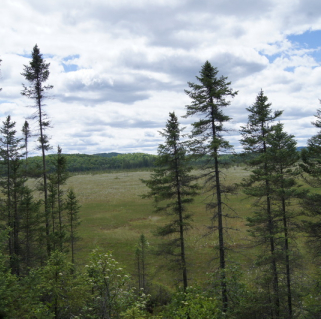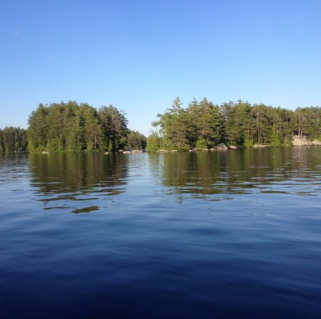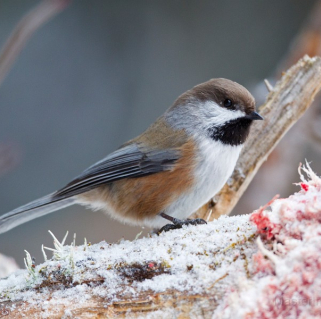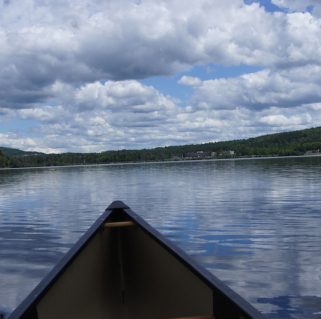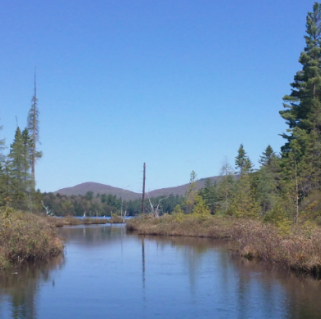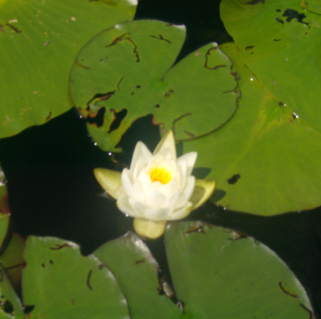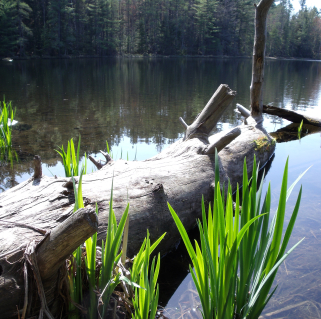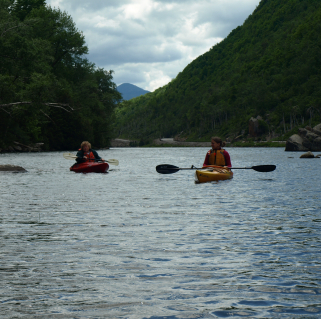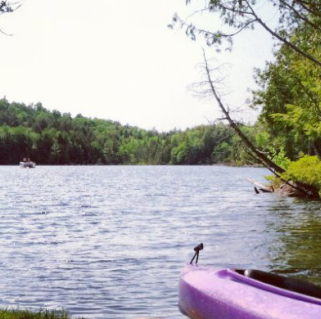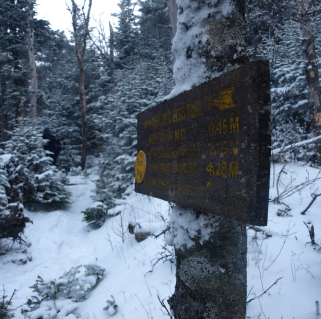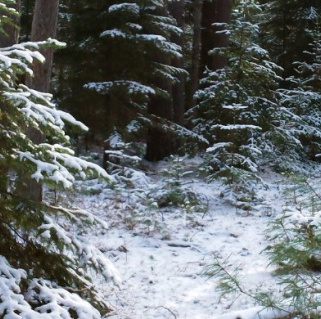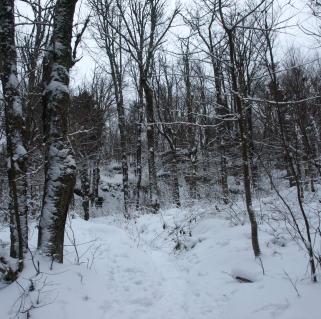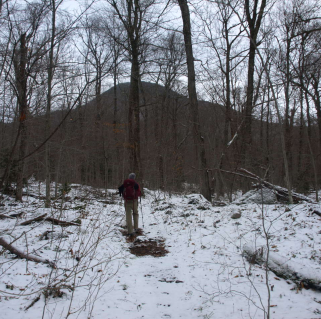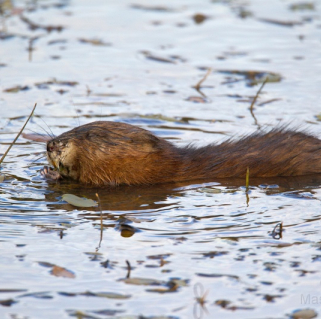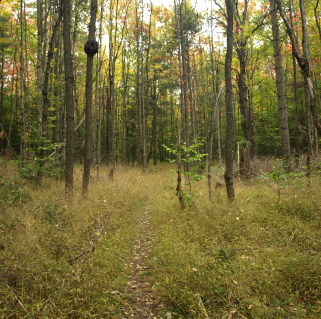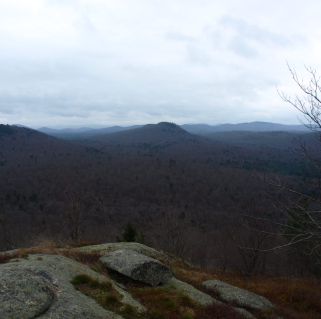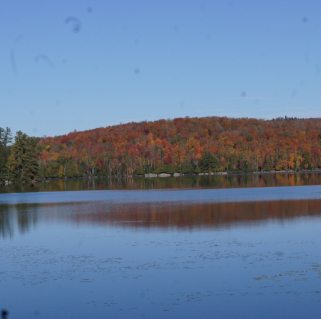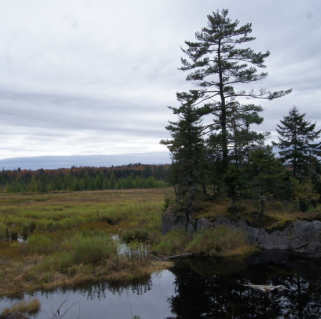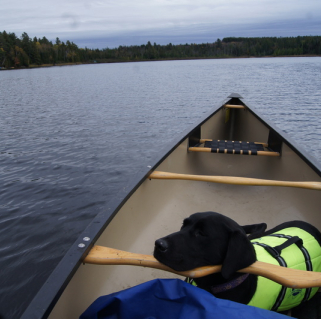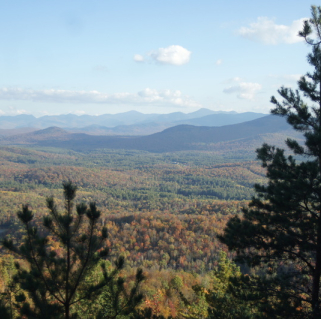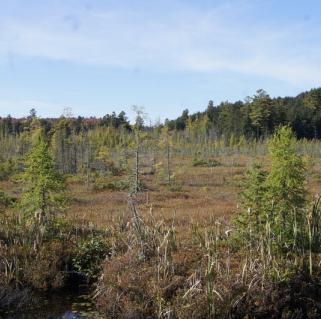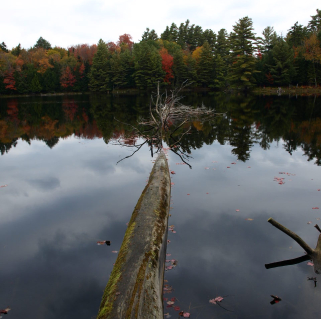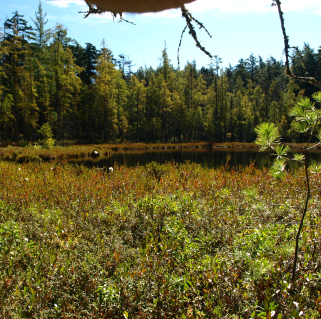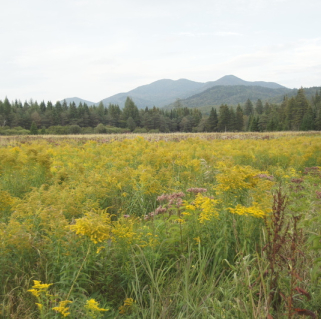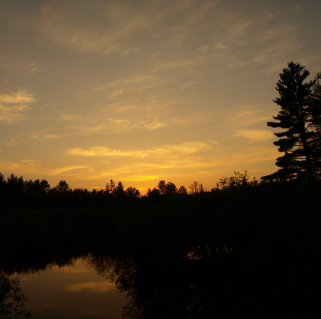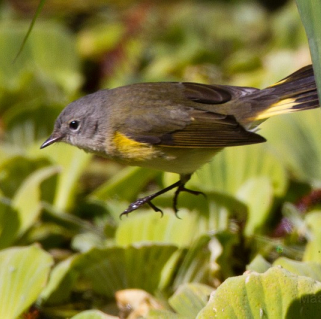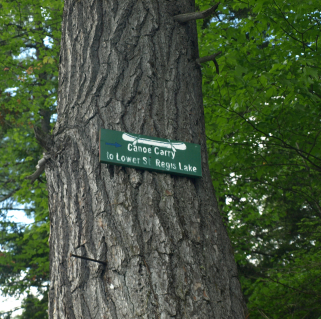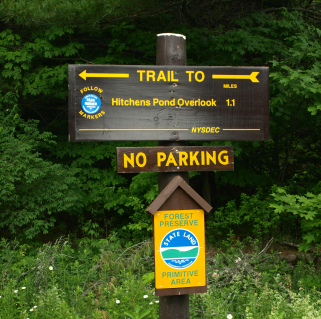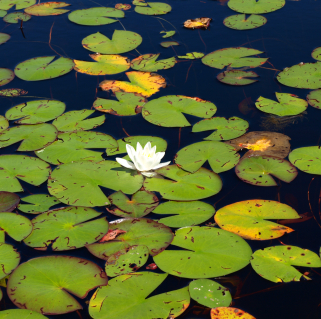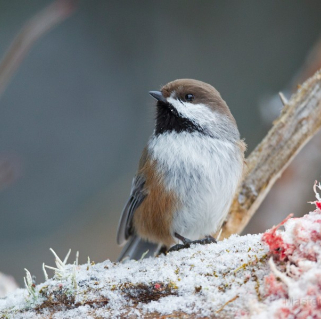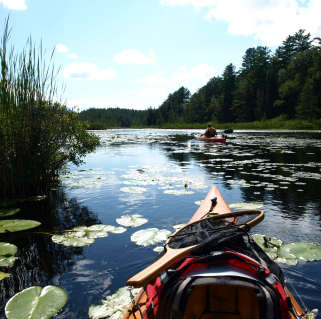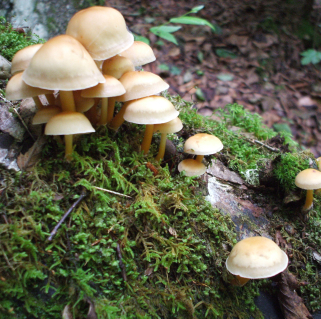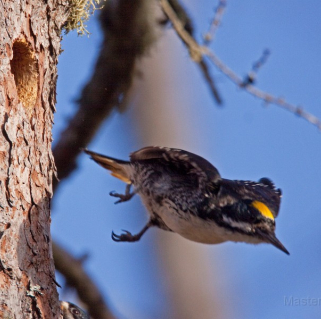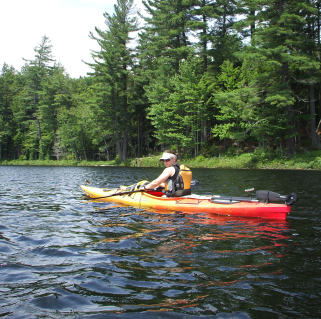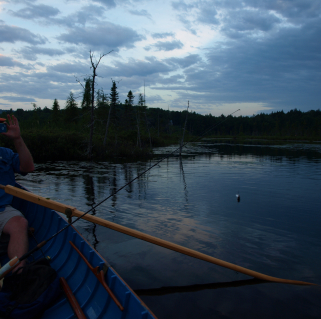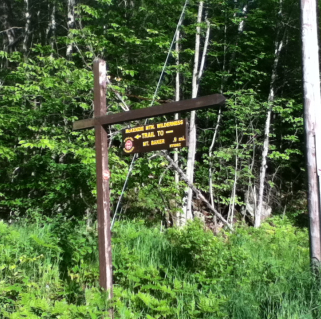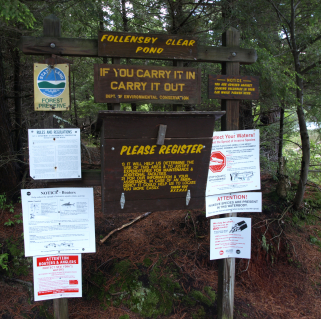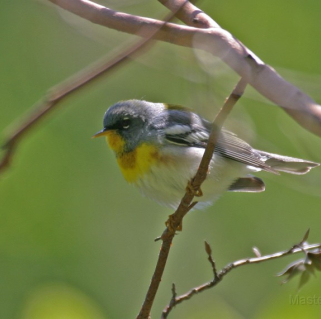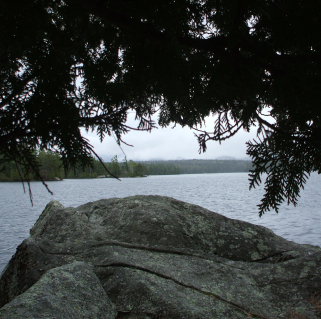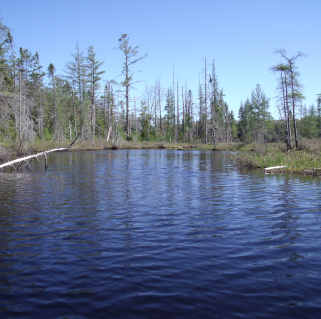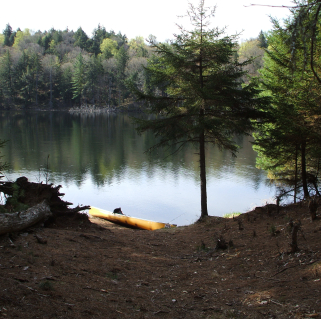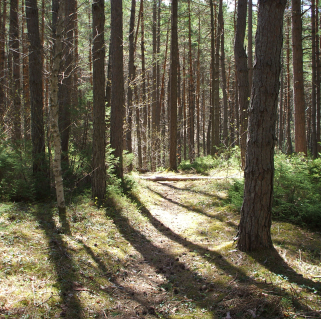Kenzie Marine
September 21, 2023
Shoulder season in Saranac Lake
Saranac Lake, nestled in the heart of the Adirondacks, offers breathtaking natural beauty all year round. While summer and winter have their own unique charms (that tend to steal the spotlight), there's something truly special about the shoulder seasons of spring and fall. However, these transitional periods bring their own set of challenges, especially when it comes to safety. Before you hit the trails this fall, or take on the new Saranac Lake Paddling Challenge, let’s explore the key safety considerations for outdoor enthusiasts during these seasons.
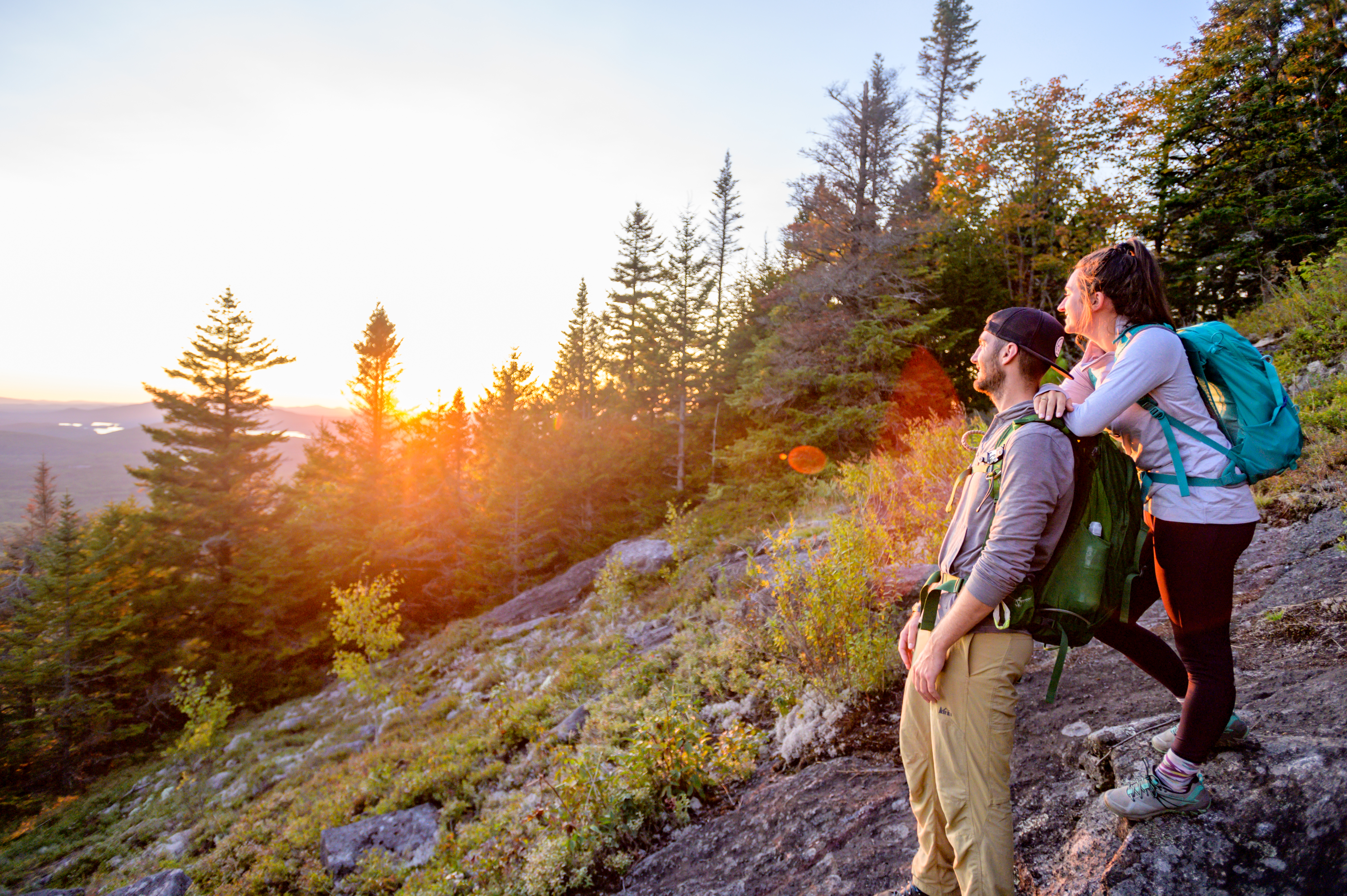
Stewardship
Being a good steward of the Adirondacks is about more than summiting a mountain, or checking off a challenge. It encompasses a broader sense of purpose—being part of a greater whole. It's about joining a collective of outdoor enthusiasts who relish their time in nature and are committed to ensuring that every visitor enjoys a memorable experience. By adhering to Leave No Trace principles and actively engaging in the Love Your ADK initiative, you contribute to the lasting stewardship of our cherished mountain landscapes and trails, and our serene waterways, safeguarding their beauty for generations ahead.
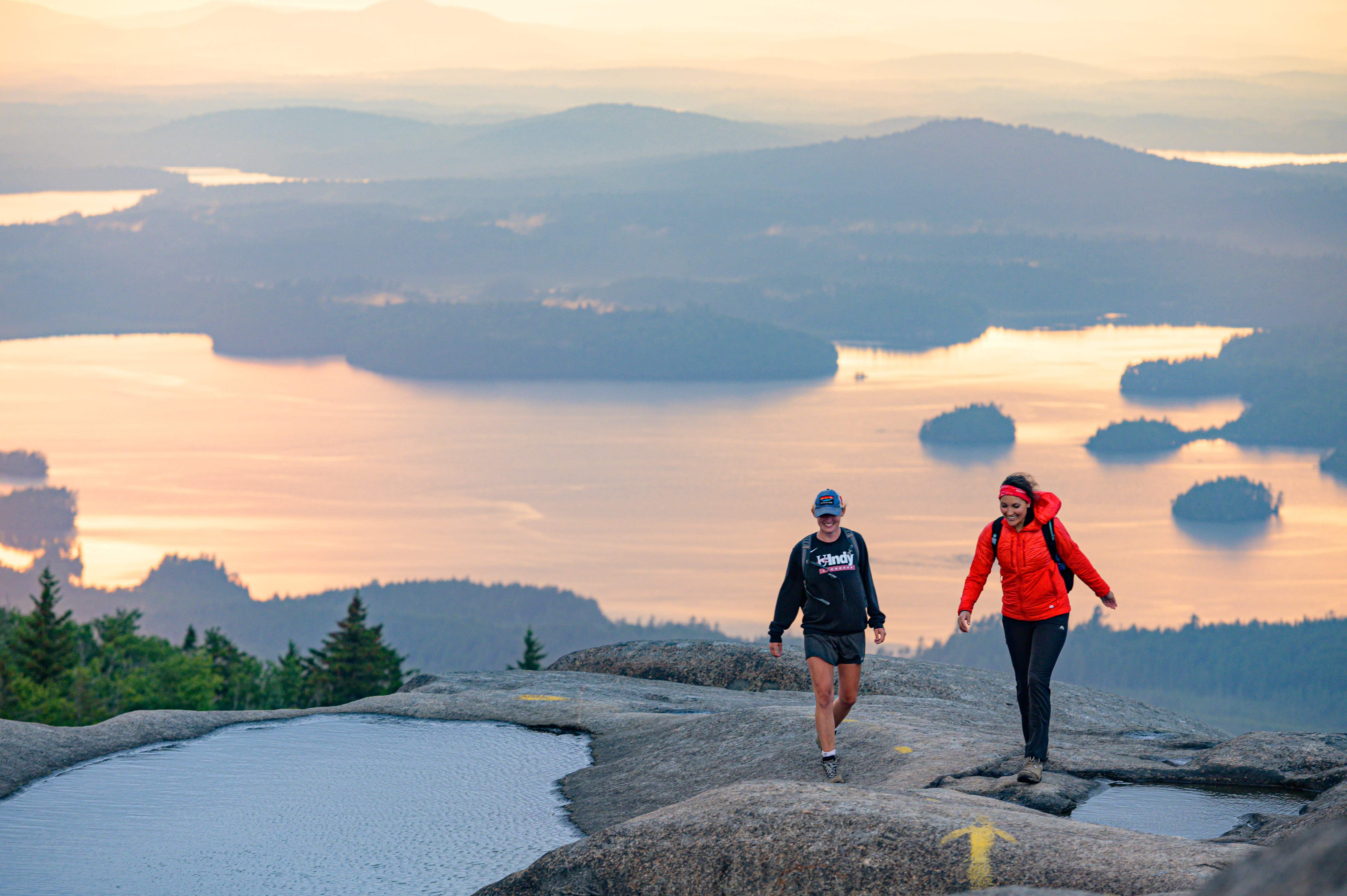
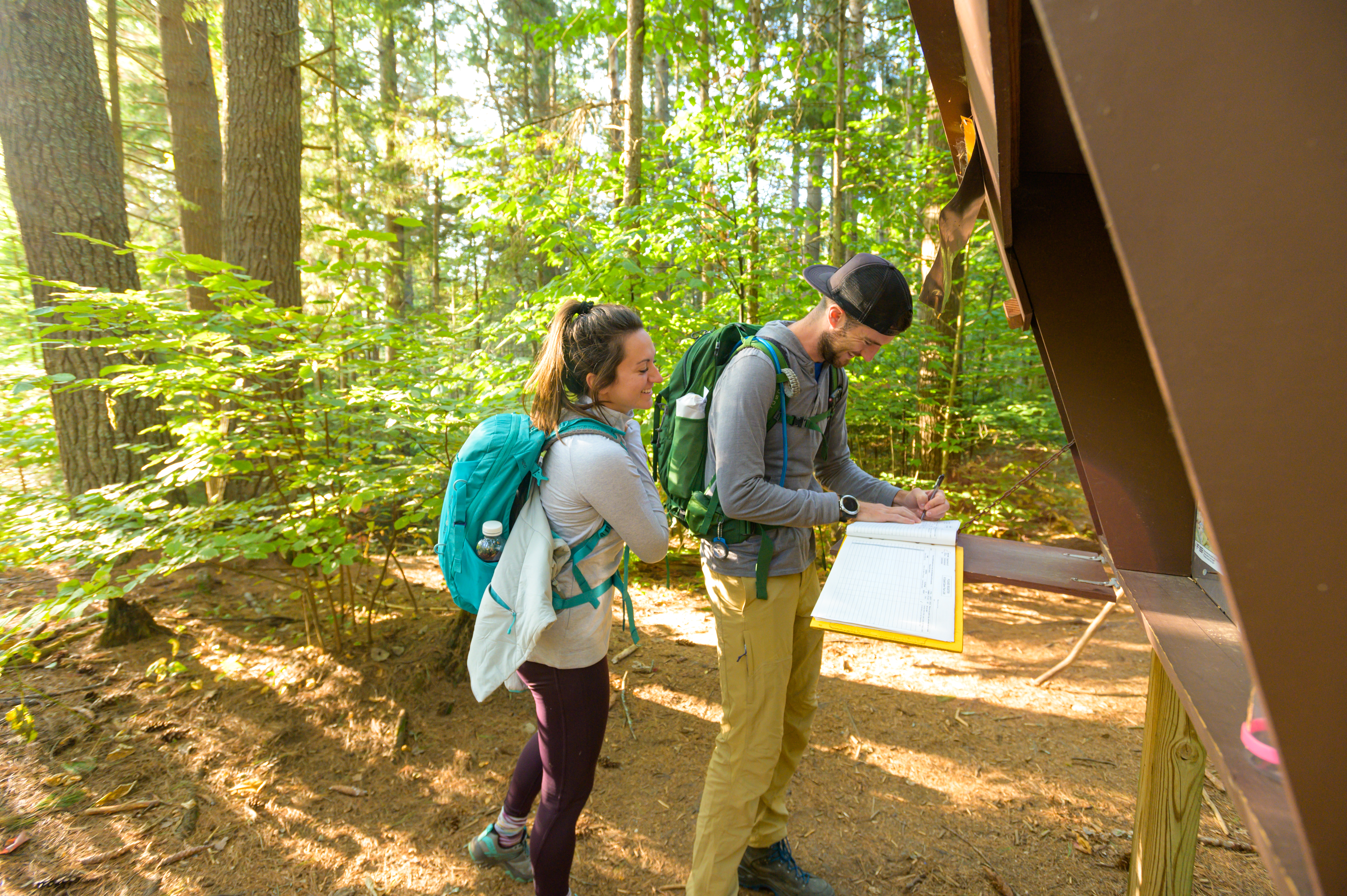

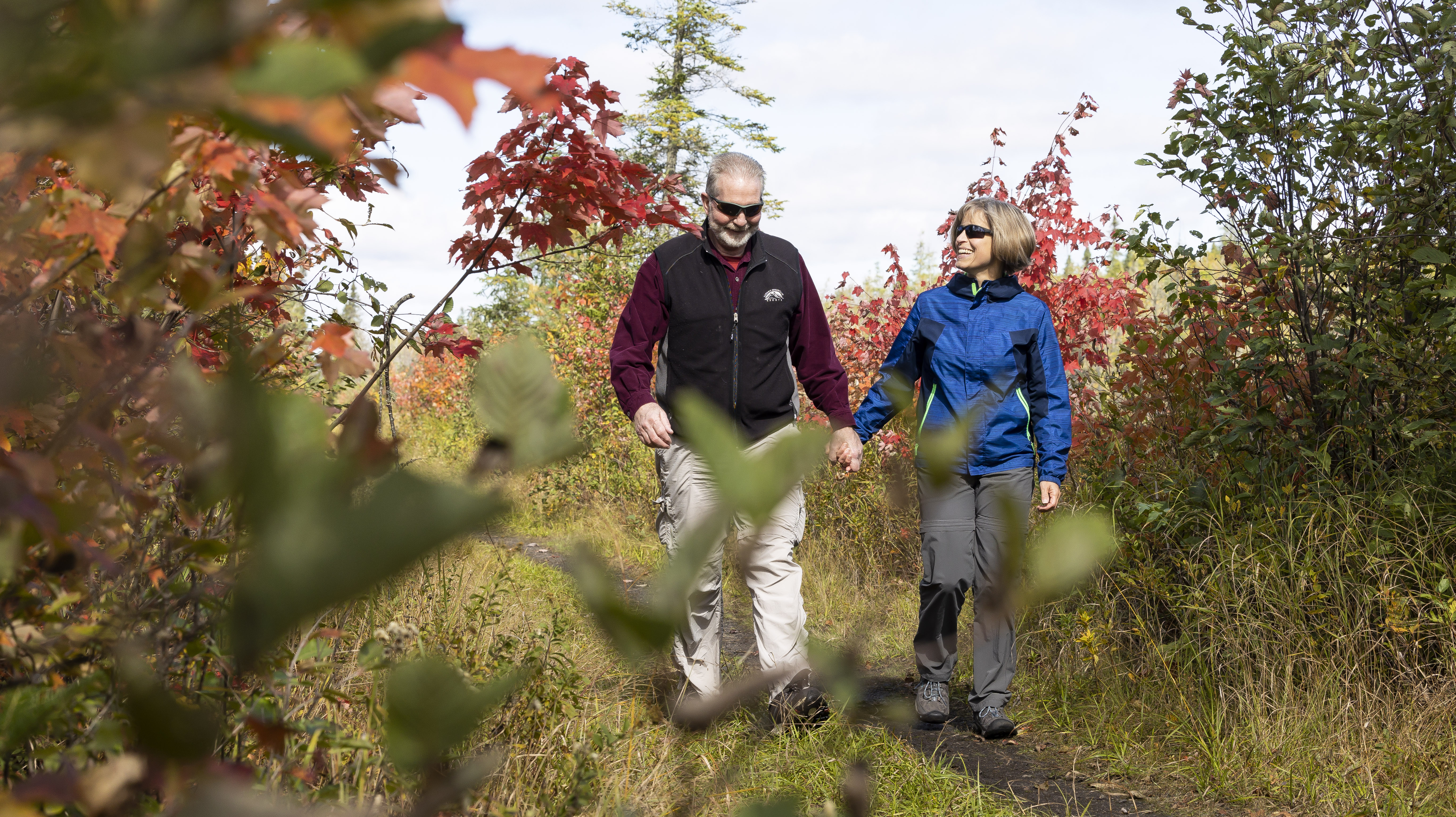
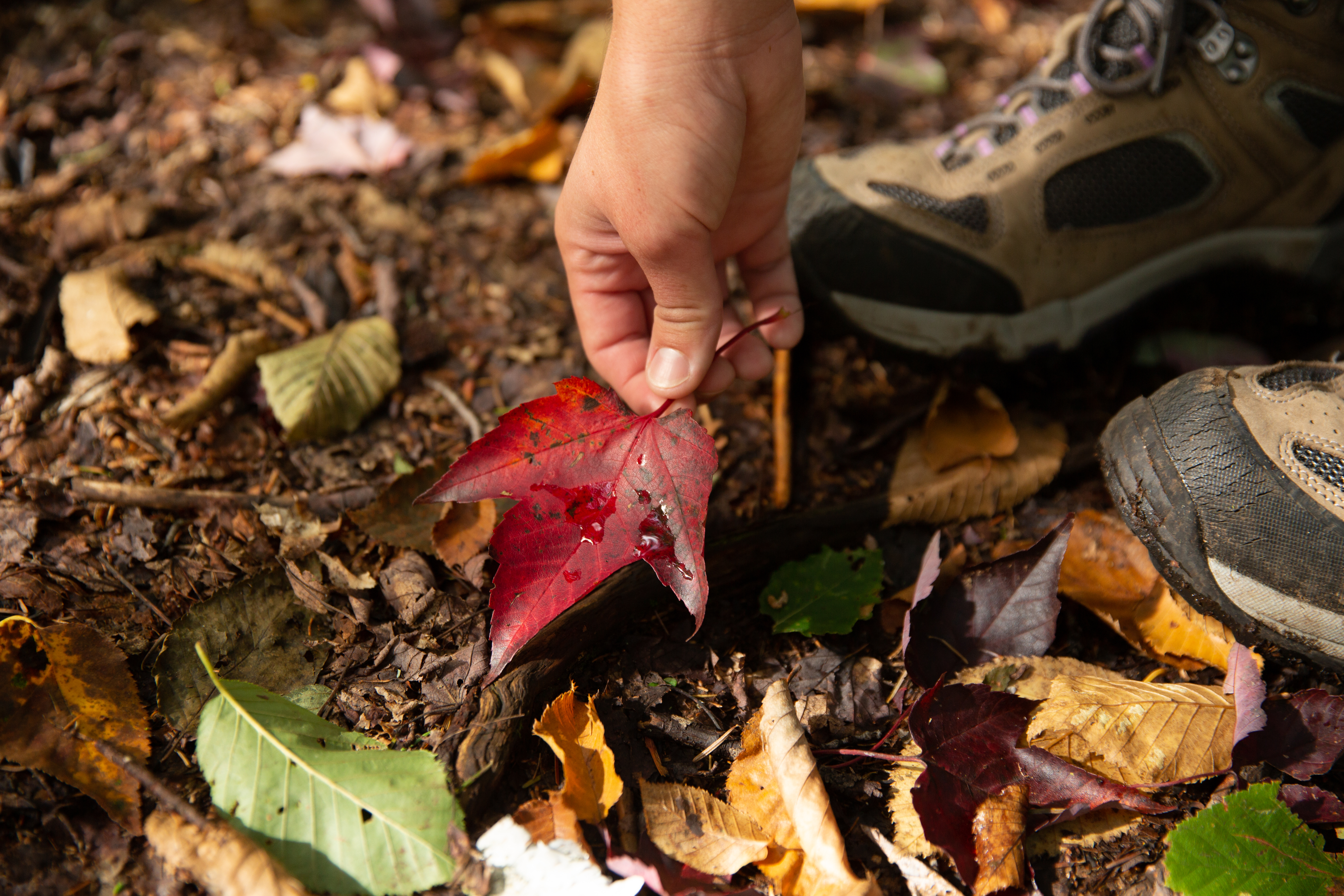
Shoulder season transitions: A world of change
One of the most enchanting aspects of shoulder seasons in Saranac Lake is the ever-changing landscape. As temperatures fluctuate and weather conditions shift, trails can transform dramatically from their base to the summit. These transitions demand careful planning, preparation, and adherence to safety protocols. While there’s nothing more exciting than hiking into a world vastly different than the one you set out from, or paddling to that perfect fall view, being prepared for the changing conditions is a must for shoulder season safety!
1. Check the Weather
Before embarking on any outdoor adventure during the shoulder season, always check the weather forecast. Saranac Lake's shoulder seasons can be unpredictable, and conditions can change rapidly. Look for updates not only for the base but also for the summit if you plan to hike a mountain. Dress in layers, carry extra clothing, and be prepared for a wide range of temperatures.
2. Wet Trails: The Consequence of a Rainy Season
This was an exceptionally rainy summer in Saranac Lake that had a significant impact on trail conditions. Many trails have become wetter and muddier than usual, making it even more crucial to practice responsible outdoor ethics. Furthermore, with the arrival of early fall frosts, the freeze and thaw cycles can intensify trail erosion, especially when coupled with increased foot traffic.
Leave No Trace Principles for Wet Trails:
-
Stay on the Trail: It's tempting to walk around muddy or wet sections of the trail, but doing so can cause soil erosion and harm fragile vegetation. Stick to the designated path to protect the environment.
-
Travel on Durable Surfaces: If you encounter particularly muddy or sensitive areas, use designated boardwalks or stepping stones when available. These are designed to minimize impact on the terrain.
-
Proper Footwear: Wear appropriate waterproof or water-resistant footwear to keep your feet dry and minimize damage to the trail. (And remember, muddy boots are a great thing when hiking!)
-
Clean Your Gear: After your hike, take the time to clean your boots, gear, and clothing. Mud and debris can carry invasive species or pathogens that can harm local ecosystems.
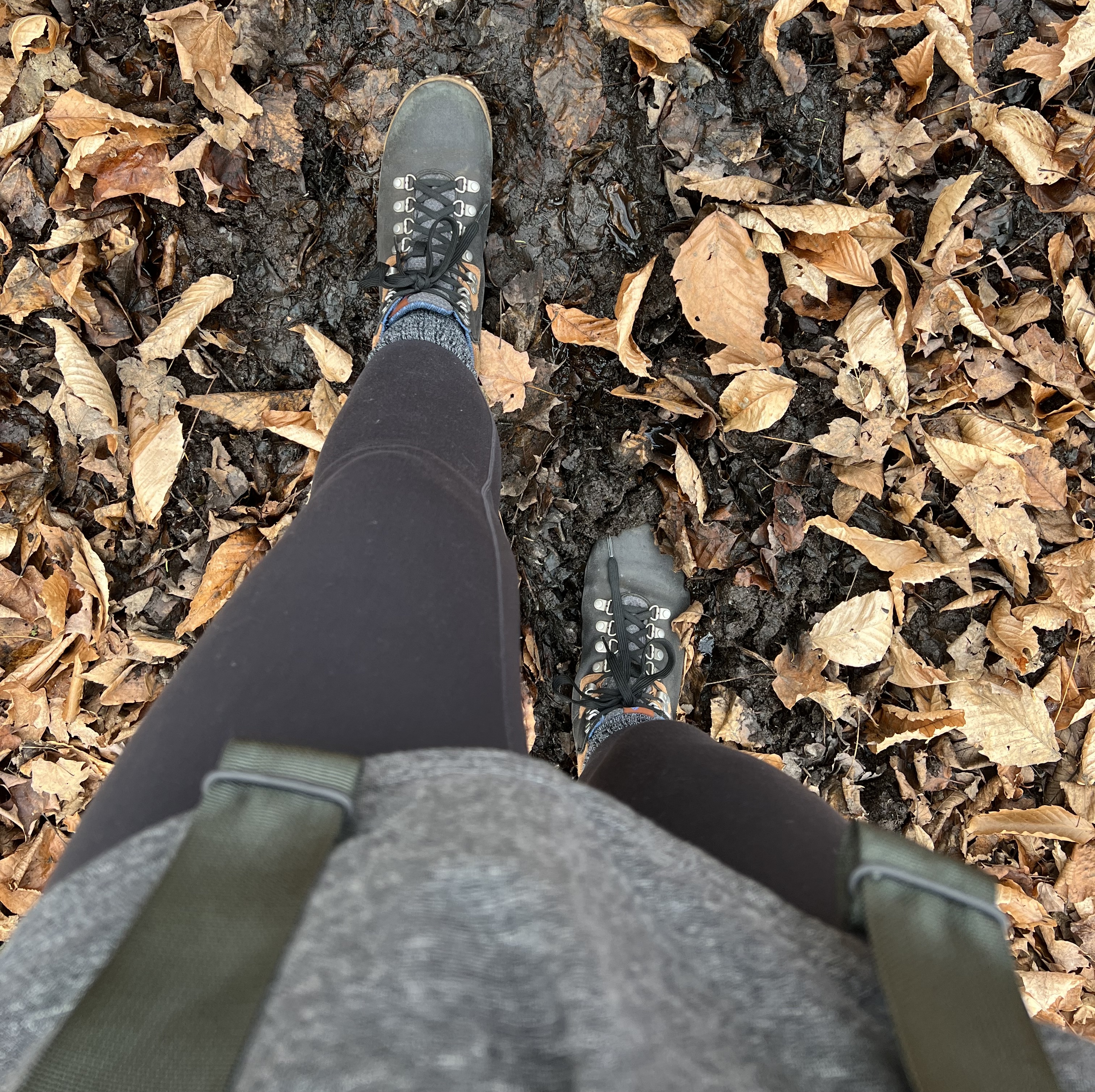
3. Paddling Safety
Saranac Lake and its surrounding waterways are a paddler's paradise, but the shoulder seasons bring their own set of challenges when navigating the lakes and rivers. Cold water, unpredictable weather, and wet conditions require extra caution. Even during the stunning, sun-drenched days of spring or fall, the water temperature can catch you off guard with its chilly bite. In the autumn, sudden frosts can swiftly plummet water temperatures, and in the spring, lingering cold nights delay the water from warming up as rapidly as expected. Consequently, paddlers may find themselves dealing with significantly colder waters than anticipated. It's essential to remember that even under the sun's warmth, the risk of hypothermia remains a concern if water temperatures are excessively cold.
Paddling Safety Tips:
-
Wear a PFD (Personal Flotation Device): Regardless of your experience level, always wear a PFD while paddling. Cold water can be dangerous, and a PFD can save your life in an emergency.
-
Check Water Temperatures: The water in Saranac Lake can be chilly, especially during the shoulder seasons. Be aware of the water temperature and dress accordingly to prevent hypothermia.
-
Plan Your Trip: Inform someone of your paddling plans, including your expected return time and route. It's always a good idea to have a float plan in case of emergencies.
-
Don’t Hesitate to Bail Out: Weather changes and challenges can arise, so there’s no shame in changing your plans, if needed. If you had your heart set on the Ultra patch, but it’s just not in the cards, there are bailout options available to ensure your safety.
-
Clean, Drain, Dry: This is particularly important when you’re transporting your boat from one waterway to another, such as in the Saranac Lake Paddling Challenge. Different bodies of water may be affected by invasive plants, and practicing clean, drain, dry helps to mitigate their spread.
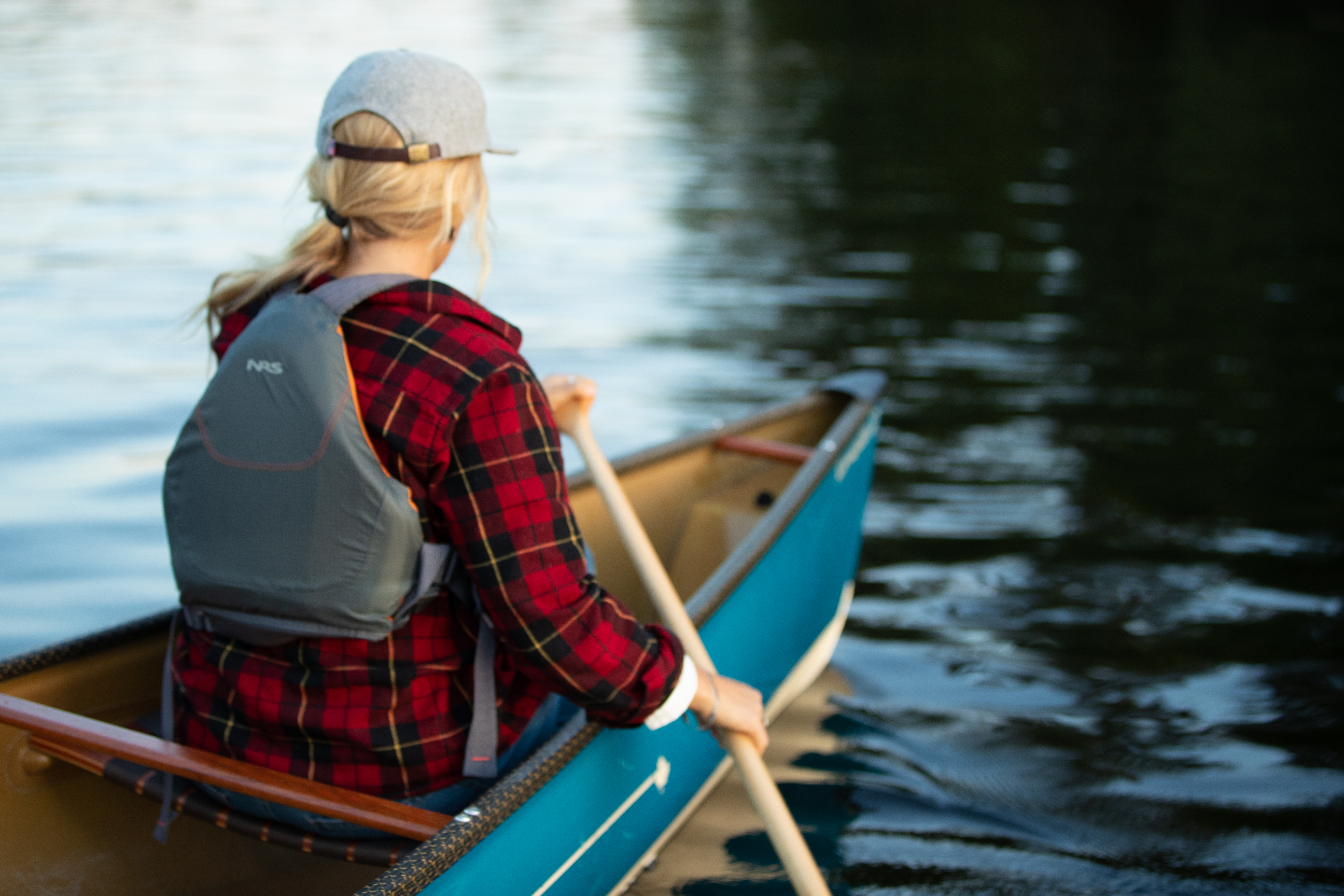
Hiking during hunting season safety tips
Another consideration when hitting the trails this time of year is the overlap of hunting season. The well-being of both hikers and hunters depends on everyone recreating safely. This time of year brings unique challenges and risks that require careful consideration and adherence to safety measures. Here's what to know before you go:
-
Know the season: Be aware of hunting seasons and regulations in your area.
-
Wear bright colors: Dress in blaze orange or other highly visible colors to be seen by hunters.
-
Stay on trails: Stick to established hiking trails to avoid wandering into hunting zones.
-
Make noise: Be vocal and use a bell or whistle to alert hunters to your presence.
-
Avoid dusk/dawn: Hike during daylight hours and avoid early morning or late evening when hunting is more common.
-
Pets leashed: Keep pets on a leash and in bright colors.
-
Communication: Inform someone of your hiking plans and expected return time.
-
Respect hunters: Be courteous to hunters you encounter and avoid disrupting their activities.
-
Research: Check local hunting maps and websites for specific rules and areas to avoid.
Hikers and hunters alike can enjoy the Saranac Lake trails together! Being aware of who you’re sharing the trails with can keep everyone safe and on their merry way to exploring the region with ease. Explore nature with confidence, knowing you have the knowledge and resources to stay safe during hunting season. For more information on safe hiking, visit our hiking page.
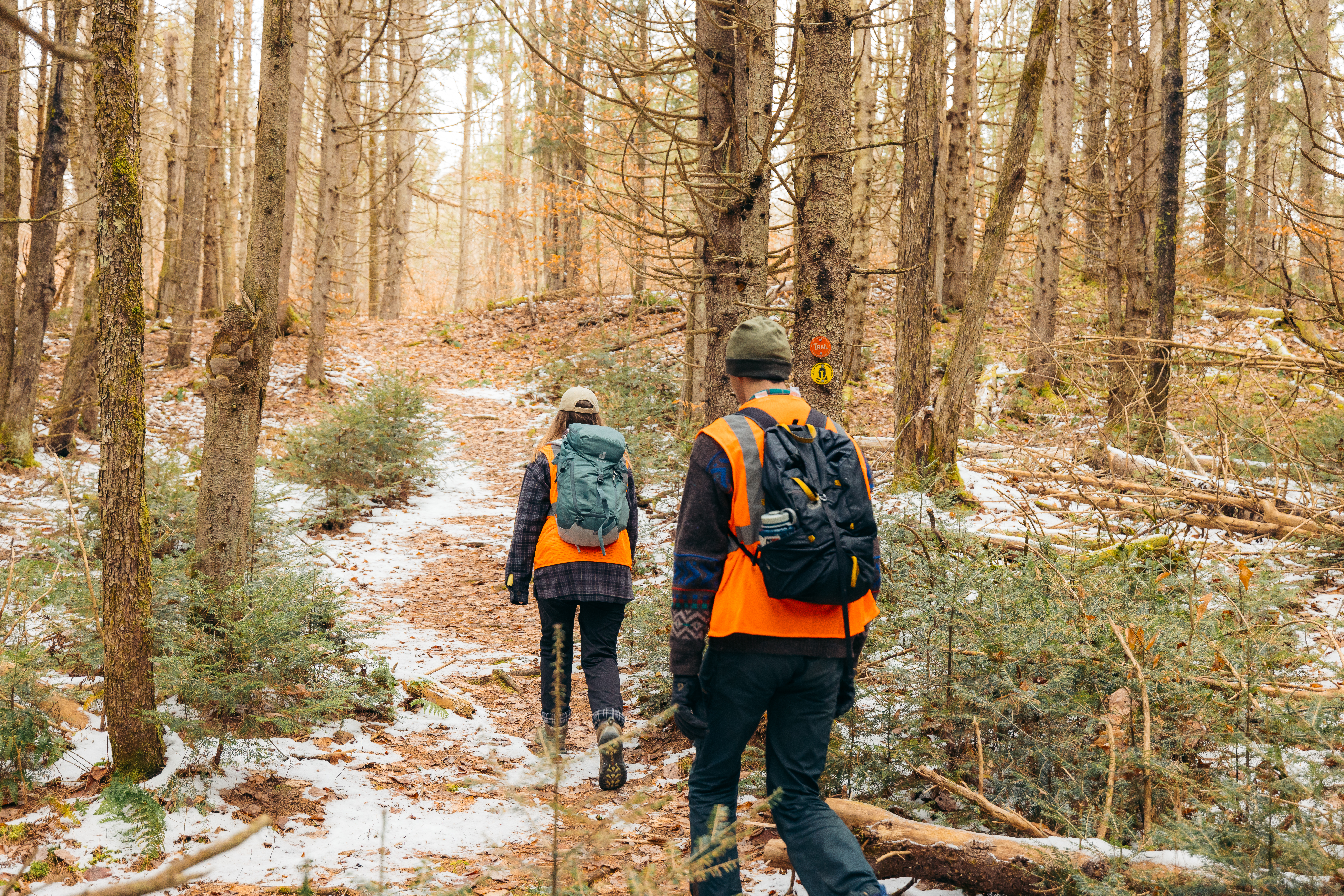
Embracing off-peak outdoor explorations
Saranac Lake's shoulder seasons offer a unique opportunity to connect with nature and experience the Adirondacks in all their splendor. However, these transitional periods demand extra vigilance and respect for the environment. By checking the weather, adhering to Leave No Trace Principles, practicing hiking and paddling safety, and supporting campaigns like Love Your ADK, we can ensure a safe and sustainable outdoor experience for everyone who visits this remarkable destination. So, lace up your hiking boots, grab your paddle, and get ready to embrace the changing seasons in Saranac Lake responsibly and safely!
The Love Your ADK campaign encourages visitors to take the pledge to practice safety and good stewardship while enjoying the Adirondacks. By committing to responsible outdoor ethics and respecting the environment, we can preserve the natural beauty of this incredible region for future generations. To Love Your Adirondacks is to protect the lands, waters, and communities we all know and love. To learn more about all the Leave No Trace Principles and take the pledge yourself, visit LoveYourADK.org
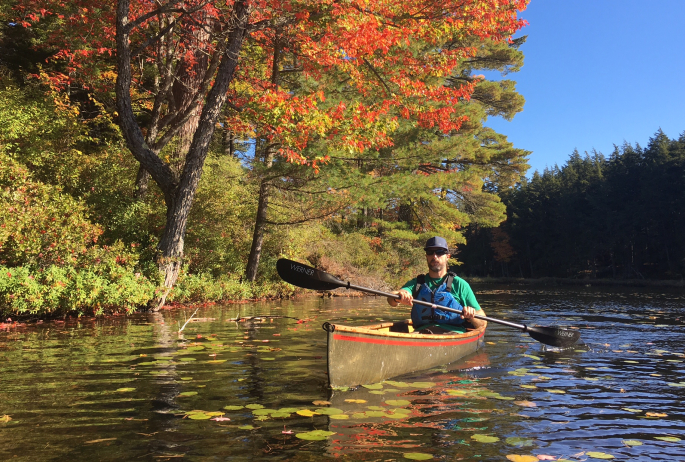
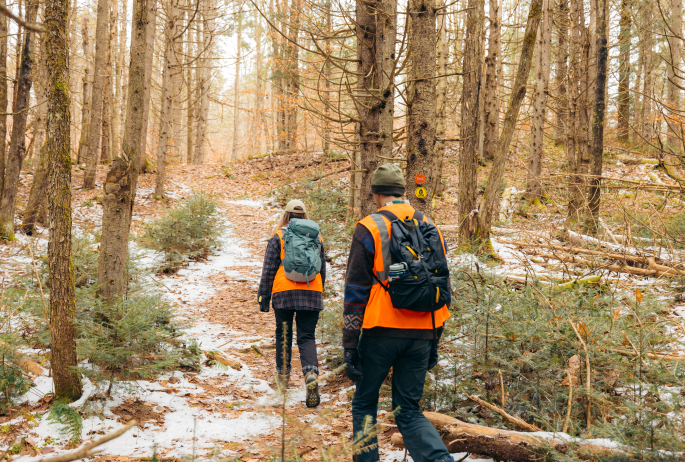
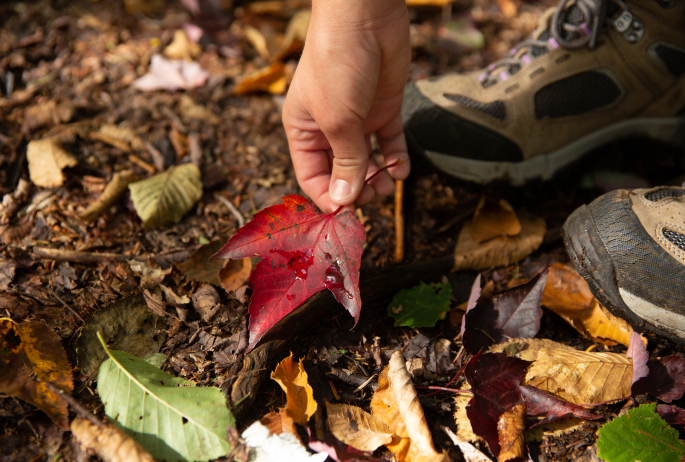

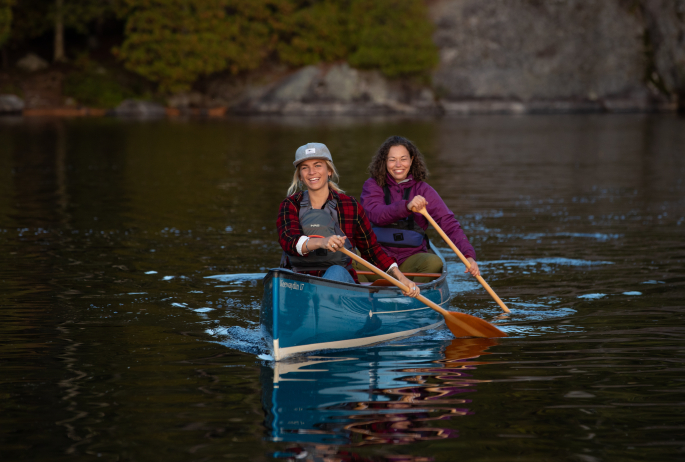

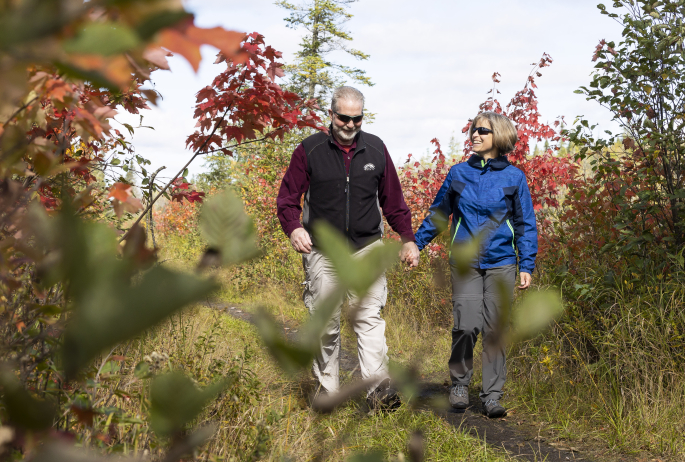
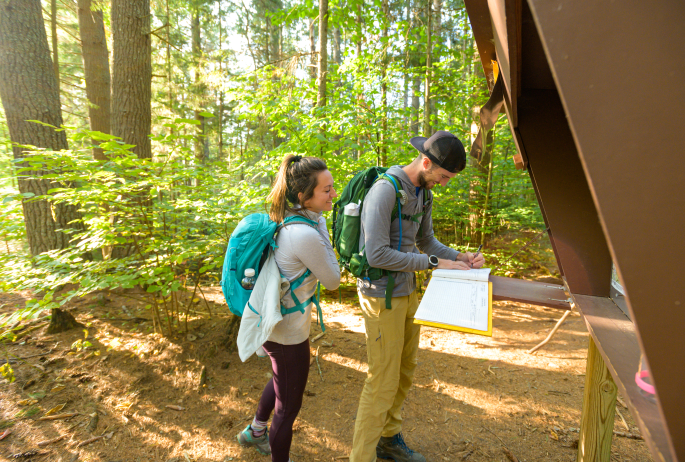

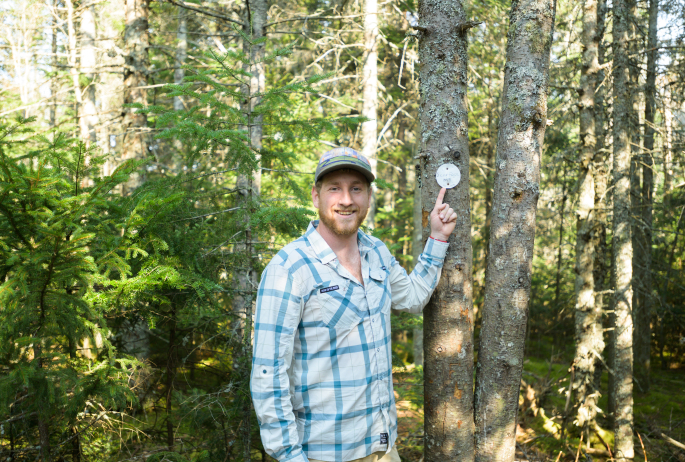
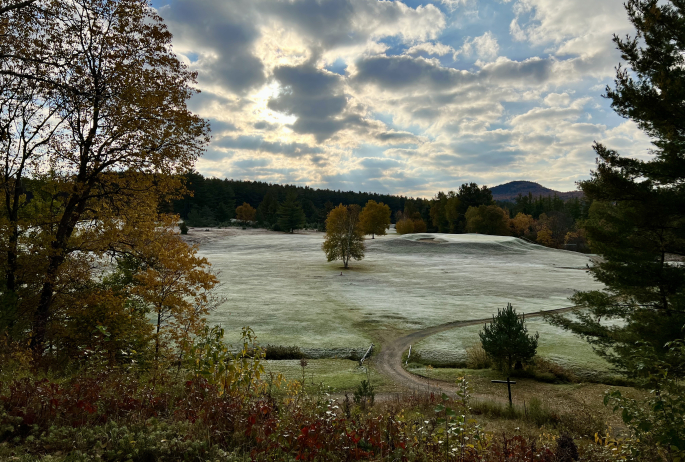
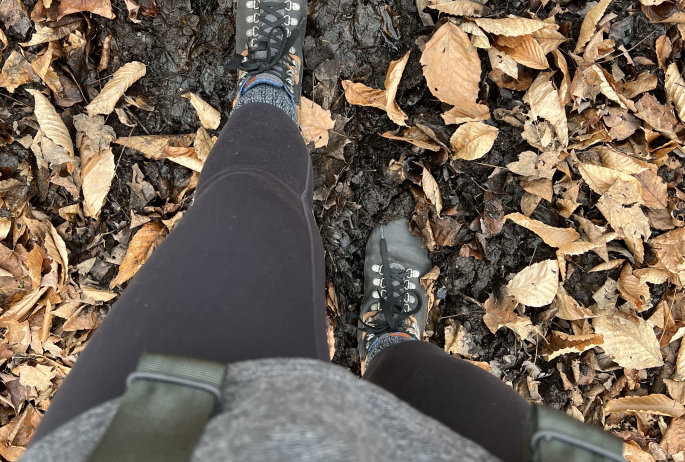

Packages and Promotions
Valid Jan. 21
- Jan. 21
Valid Jan. 21
- Jan. 21
Pet Getaway
Voco Saranac Lake
Your dog deserves an Adirondack getaway too. Book our pet friendly hotel near Lake Placid welcomes every member of your crew. Book our Pet Package...
